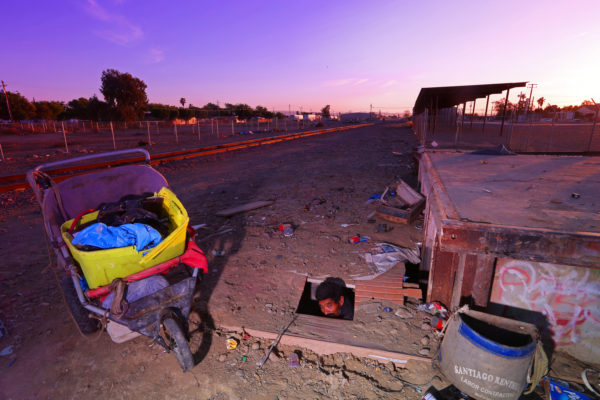By Conor Risch, guest writer

Seeing a person’s home or shelter often helps me understand more about his or her life than a portrait. Housing is hard to come by in Huron, California, the “giant farm labor exploitation camp” depicted in Richard Street’s project Knife Fight City. Because I live in a city that is currently struggling to address its significant homeless population—Seattle—I’m immediately drawn in by Street’s image of a seasonal worker who is living underground.
Street photographed the man, Jose Martinez, with his head halfway out of a square opening in a wood platform that covers the hole in the ground where he lives. It’s in a rail yard, just a few feet away from a train track. Street’s flash illuminates Martinez, the beat-up stroller and picking sack that he uses to collect recyclables when he’s not harvesting crops, and trash strewn on the ground around the hole. The hard light of Street’s flash contrasts with the warm glow of sunset on the horizon, which is also reflected in the train tracks that run diagonally across the frame, drawing our eyes into the distance and back again.
The image speaks plainly about the relationship between capital and labor in Huron. We imagine that when Martinez covers the hole in his shelter’s roof, a passerby would have no idea he’s there. It’s a striking metaphor for what most Americans understand about the lives of seasonal agricultural workers here, who live under what Street calls an “unacknowledged variety of American apartheid.”
Richard Street’s Knife Fight City is a sponsored Blue Earth project. Click to check out additional images from Knife Fight City by Richard Street.
Conor Risch is a Seattle-based writer and senior editor of Photo District News (PDN). Follow him on Twitter @c_risch